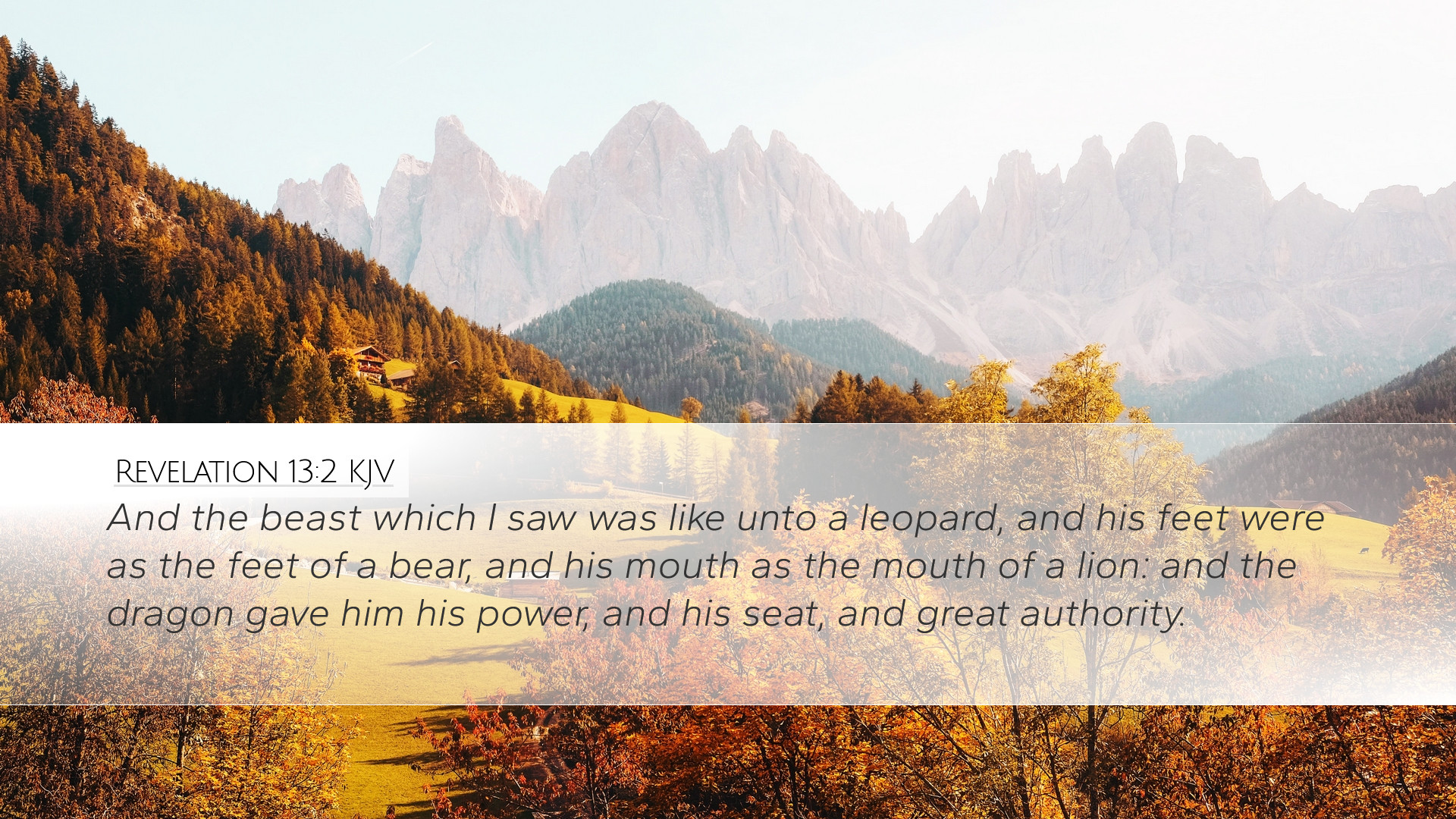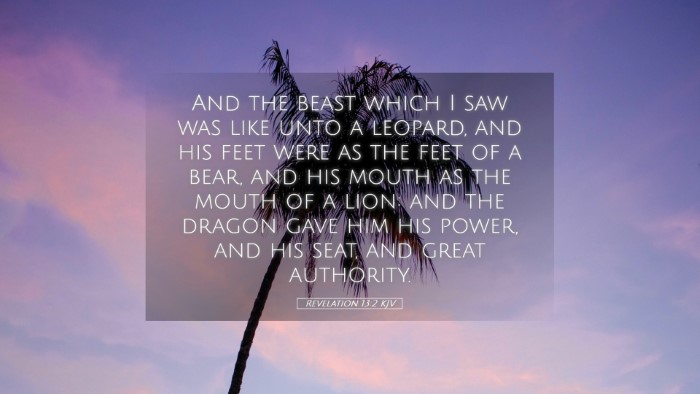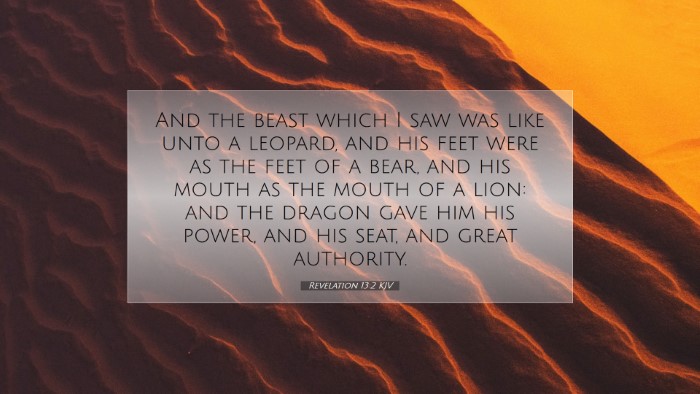Commentary on Revelation 13:2
Text of Revelation 13:2 (KJV): "And the beast which I saw was like unto a leopard, and his feet were as the feet of a bear, and his mouth as the mouth of a lion: and the dragon gave him his power, and his seat, and great authority."
Introduction
The verse in Revelation 13:2 presents a vivid imagery that invites deep theological reflection. Each element of the beast is symbolic, indicating the combination of various world powers and their characteristics. This commentary seeks to explore the implications of these symbols, drawing insights from public domain commentaries, particularly those of Matthew Henry, Albert Barnes, and Adam Clarke, to provide a comprehensive understanding fit for pastors, students, theologians, and scholars.
The Beast’s Description
- Like unto a leopard: The leopard signifies swiftness and ferocity. Albert Barnes points out that leopards are known for their speed and might, suggesting that this beast will act quickly and with fierce decisiveness in its rule.
- Feet as the feet of a bear: Bears, which symbolize strength and a powerful grip, suggest the beast's ability to crush opposition and exert dominion over others, reflecting Adam Clarke’s interpretation of the bear representing the Medo-Persian Empire.
- As the mouth of a lion: The lion is often referred to as the king of beasts, symbolizing majesty and authority. Matthew Henry emphasizes that the mouth of the beast speaks with a commanding voice, able to instill fear among nations.
The Source of Power
The text states, "and the dragon gave him his power, and his seat, and great authority." This imagery is crucial as it links the beast to the dragon, often understood to symbolize Satan. Adam Clarke notes that the connection implies that the beast, while possessing great earthly power, is fundamentally influenced by evil. The dragon's empowerment of the beast testifies to the supernatural forces working through political and social structures.
Theological Implications
The amalgamation of the symbolic animals paints a picture of a formidable power that opposes God and His people. The unified characteristics suggest that such a power will be a combination of swiftness, strength, and authority. This sets a stage where the faithful must discern between the work of God and the manifestations of this beastly power.
Historical Context and Interpretation
Various scholars, including Henry and Barnes, have interpreted the beast in light of historical empires such as Babylon, Medo-Persia, Greece, and Rome. Each empire displayed traits mapped to the beast's description, foreshadowing a future entity that will embody traits of these powers while exhibiting a ferocity and authority that challenges God’s sovereignty.
The Beast in Eschatology
In eschatological discussions, the beast serves as a focal point for understanding how evil operates in the final days. The concept of the beast gaining authority reflects not just a singular ruler but potentially a system that is opposed to divine authority and is supported by the dragon. Henry’s thoughts on how this reflects ultimate deception and the leading away of the faithful need to be taken seriously by Christians today.
Application for Believers
Reflecting on Revelation 13:2 encourages believers to remain vigilant and discerning. The symbols associated with the beast serve as a reminder that worldly powers can be deceptive and rooted in evil. It urges the faithful to anchor themselves in the truths of Scripture while being wary of the influences of power that may oppose God’s mission for justice and righteousness.
Conclusion
In summarizing the insights from the public domain commentaries on Revelation 13:2, it is clear that the verse encapsulates a profound warning about the nature of worldly power and its potential to align with evil. The descriptors of the beast and its connection to the dragon compel an examination of our understanding of authority in light of Scripture. In this way, it serves as a call to action for believers to engage with their faith vigilantly as they navigate a world filled with allegiances that may challenge their commitments to Christ.


